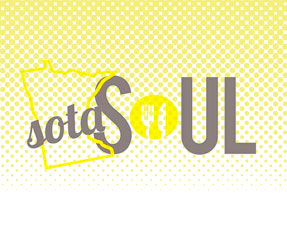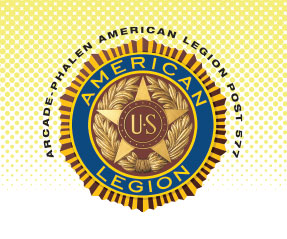Small Business Resources for COVID-19
13 Apr 2020
Thanks to B. Kyle and our friends at St. Paul Area Chamber for this digest of Small Business Links to resources:
Today’s look: "I’m a small business with fewer than 500 employees. What are my options?"
Of all of the state and federal programs developed in support of business and nonprofits, I have highlighted 8 programs that should apply to you. They are detailed below.
The bottom line is twofold: speed is of the essence, and apply for these programs immediately. Guidance is updating every day, so start with your lender and get your information from the source websites, their FAQ pages.
Updates from the SBA as of 4/7/2020
- New FAQs on PPP Loans
- MDVA Offers Veteran's Grants.
- SBA Disaster Loan Training Available
- Info from SBA Partners and Other Agencies
- Stay Updated
For Your Business
The good news (is there any?) for small business is that most resources being made available are designed for you. The question for you is the sheer volume of information. Your first step should be calling your lender. Most of the programs available to you are submitted to your lender and they are prepared to guide you. To help you in your decision-making, CliftonLarsonAllen has designed a terrific resource: “Decision Tree” to help you navigate COVID-19 loan and grant options. Based on your organization and its impact from COVID-19, options are laid out very well.
Some components of available resources are forgivable. Right away, you’ll want to apply for the state’s SBEL, the SBA’s EIDL - to get access to that $10,000 advance/grant, and the PPP – because this potentially is forgivable as well. In each case, urgency is in order.
Of the overview of 1-8 programs detailed below, you should consider all of them:
- Unemployment Insurance for your employees – and the new Pandemic Unemployment Assistance – are available for your team should you be laying off or furloughing staff.
- DEED’s Shared Work Program – eligibility and application process is here. Application is here. Email specific questions to shared.work@state.mn.us.
- DEED’s Small Business Emergency Loan (SBEL) – fill out DEED’s initial application and submit to approved lender.
- Minnesota DEED Small Business Loan Guarantee (SBLG) – apply through an approved lender.
- SBA Economic Injury Disaster Loans/Advance (EIDL)* - apply through SBA’s online portal.
- SBA Express Bridge Loan Pilot Program – apply through an approved SBA Express Lender.
- Paycheck Protection Program (PPP) Loans* - apply through an approved SBA lender. The US Chamber’s Small Business PPP Loan Guide (attached) is extremely helpful, as is CliftonLarsonAllen’s list of 5 questions for you to address.
- Families First Coronavirus Response Act - this isn't an application, this is a new law you need to understand and implement in your organization.
*You can apply for both Payroll Protection Plan and the EIDL/$10K advance though, when determining loan forgiveness under PPP, assistance you receive from EIDL is taken into consideration.
Here's a more detailed explanation of these programs:
1) Minnesota State Unemployment Insurance, Federal Pandemic Unemployment Compensation (FPUC), and Pandemic Unemployment Assistance (PUA)
Today, April 8, DEED announced that Minnesota has been approved to receive PUA and already has processed over 200,000 applications, representing over $120 million. You don’t need to do anything; if you have applied for UI, DEED has you on the PUA list.
On Saturday, April 4, the U.S. Department of Labor published the Unemployment Insurance Guidance Letter 15-20 (UIPL) providing guidance to states for Federal Pandemic Unemployment Compensation (FPUC). Under FPUC, states will administer an additional $600 weekly payment to certain eligible individuals who are receiving other benefits. This provision is contained in Section 2104 of the Coronavirus Aid, Relief, and Economic Security Act (CARES Act) enacted on March 27, 2020.
Pandemic Unemployment Assistance (PUA) is part of the FPUC, a new program that covers those who do not qualify for regular Unemployment Insurance benefits, such as independent contractors and self-employed people. It is in the process of being implemented. When it is implemented you apply directly with the Minnesota Unemployment Insurance at uimn.org.
More information is at www.uimn.org.
2) Minnesota DEED Shared Work Unemployment Compensation Program
The Shared Work program offers an alternative to layoffs for employers facing a temporary downturn in business. Basically, you submit an application and a list of the selected employees who will work reduced hours during a temporary slowdown. They are paid unemployment benefits to offset part of their reduced wages. The benefits usually pay about ½ of the employee’s lost income due to the reduced hours. You also are required to maintain health and pension benefits during the Shared Work time frame.
This program is a binding contract between you and the Unemployment Insurance Program. You need to apply and get approval before you implement – or change – your plan.
Administered by DEED’s Unemployment Insurance Division, the program allows employers to divide available hours of work among a group of employees instead of implementing a full layoff. These employees may then receive partial unemployment insurance benefits while working reduced hours.
The purpose of Shared Work is to avoid a layoff, not to subsidize wages. Shared Work can help employers avoid the difficulties that can go along with a layoff. If employees keep working during a temporary slowdown, employers can more quickly gear up when business conditions improve.
Learn more about the Shared Work Program on DEED’s Unemployment Insurance Division's website.
3) Minnesota DEED Small Business Emergency Loan (SBEL) Program
The Minnesota Small Business Emergency Loan program was established following Executive Order 20-15. It will assist small businesses directly and adversely affected and whose industry is named in Executive Orders 20-04 and 20-08 following the COVID-19 pandemic.
See a list of eligible businesses, “whatever the form of their organization,” listed here.
NOTE: You should apply for DEED’s SBEL and the SBA’s EIDL at the same time. DEED’s intent is that any loans or grants received subsequent to the SBEL proceeds should be used, when allowed by the lender, to pay off the SBEL. See the Small Business Emergency Loan site for more details.
4) Minnesota DEED Small Business Loan Guarantee (SBLG)
DEED now offers the Minnesota Small Business Loan Guarantee Program. This program enables a small business to obtain a term loan when it cannot otherwise qualify for a loan. This is a temporary program, approved by the Legislature in late March.
Eligibility is based on business size, fewer than 250 employees statewide, with certain restrictions for industry type. No job creation requirements. Funds may be used as working capital.
Loans are made by lenders enrolled in the SBLG program. See a list of enrolled lenders listed here.
5) SBA Economic Injury Disaster Loan/Advance (EIDL)
This program provides low interest, long term Economic Injury Disaster Loans for up to $2 million and can include a onetime immediate advance of up to $10,000, contingent on the disaster’s impact. The interest rate is 3.75% for small businesses. The interest rate for non-profits is 2.75% and the loans can be extended over 30 years.
Businesses applying for an EIDL loan can request up to $10,000 to be disbursed immediately in the form of an emergency advance. Note that the advance is up to $10,000; no guarantee you will get that total amount. The initial amount need not be repaid, regardless of the loan decision.
The application has been simplified and can be completed 100% online through the improved web portal at sba.gov/disaster.
6) SBA Express Bridge Loan Pilot Program
This program allows small businesses who currently have a business relationship with an SBA Express Lender to access up to $25000 quickly. Cab be a term loan or used to bridge the gap while applying for a direct SBA Economic Injury Disaster Loan. The idea is that, once an EIDL is approved, this Bridge Loan is repaid (functions like Minnesota DEED’s SBEL, in that it’s intended to be a bridge before/until EIDL funds are received). See more information here.
7) U.S. Paycheck Protection Program (PPP) Loans
On April 7, CliftonLarsonAllen published an article on “5 Questions to Ask Before Applying for a Paycheck Protection Program Loan.” Read it here.
The 5 questions to ask up front:
- Eligibility relative to size standards vs revenue thresholds. If your revenue is over the threshold but you meet the SBA size standards, you are still eligible for the PPP.
- How to interpret the $100,000-per-employee compensation limit. That cap applies only to salaries, wages, commissions or tips. Details are many, and laid out in the article.
- How to handle affiliated entities. Determine if your bank wants applications from the individual entity level or from one applying on behalf of the group. Just so long as you don’t exceed the $10 million limit for the affiliated organizations as a whole.
- How to handle owners’ self-employment income in loan sizing. Confirm with your bank how they are approaching this, because there are different approaches.
- How to handle organizations with non-U.S. ownership. SBA guidance provides that foreign-owned companies with U.S. employees can apply for the PPP loans, provided they otherwise meet the eligibility requirements.
The Coronavirus Aid, Relief, and Economic Security (CARES) Act allocated $350 billion to help small businesses keep workers employed amid the pandemic and economic downturn. Known as the Paycheck Protection Program (PPP), the initiative provides 100% federally guaranteed loans to small businesses. Importantly, these loans may be forgiven if borrowers maintain their payrolls during the crisis or restore their payrolls afterward.
U.S. Dept of the Treasury provides assistance to small business. The U.S. Chamber of Commerce has issued this guide to help small businesses and self-employed individuals check eligibility and prepare to file for a loan.
The PPP is a forgivable loan program for small businesses to encourage them to maintain their payrolls. The loan will be forgiven as long as the loan proceeds are used to cover payroll costs, and most mortgage interest, rent, and utility costs over the 8 week period after the loan is made; and employee and compensation levels are maintained during that 8 week time period.
Should you have laid off employees already, you can receive the loan, re-hire your employees, and use the loan proceeds to make payroll and other eligible costs. To receive forgiveness, you must rehire employees by June 30, 2020 and maintain head count and compensation levels for 8 weeks after you receive the loan.
The program is open through June 30, 2020, though you are strongly encouraged to apply as soon as possible. There are specific requirements about how you spend the loan and if you continue to employ your workers in order for it to be forgiven. Read them here.
Small businesses and sole proprietors can begin applying on April 3. Independent contractors and self-employed individuals can apply beginning on April 10.
The Treasury Department has just released the loan application -- view it here. The loans are government-backed, but you will still need to apply for the loan at your local bank. This is just the application.
8) Families First Coronavirus Response Act
The Families First Coronavirus Response Act (FFCRA or Act) requires certain employers to provide their employees with paid sick leave and expanded family and medical leave for specified reasons related to COVID-19. These provisions will apply from April 1, 2020 through December 31, 2020.
You can view the slides from the DOL Families First Response Act Webinar. These slides include helpful guidance related to the use of FFCRA-related paid leave.
Lastly, the Department’s Wage and Hour Division (WHD) posted the rule issuing regulations pursuant to the new law. Those regulations can be accessed Here. I urge everyone to review the regulations as they provide even more detailed guidance for the questions that many folks have.
I know this is a lot of information to digest. We are working with our partners to organize information and coordinate efforts to educate our community. As always, if you still have questions about resources available, contact our Rapid Response Team to assist you in finding an answer.
Be well!
B Kyle
President/CEO
Saint Paul Area Chamber of Commerce
More Topics

Nonprofit Resources for COVID-19
Apr 13 2020
Self Employed Resources for COVID-19
Apr 13 2020





